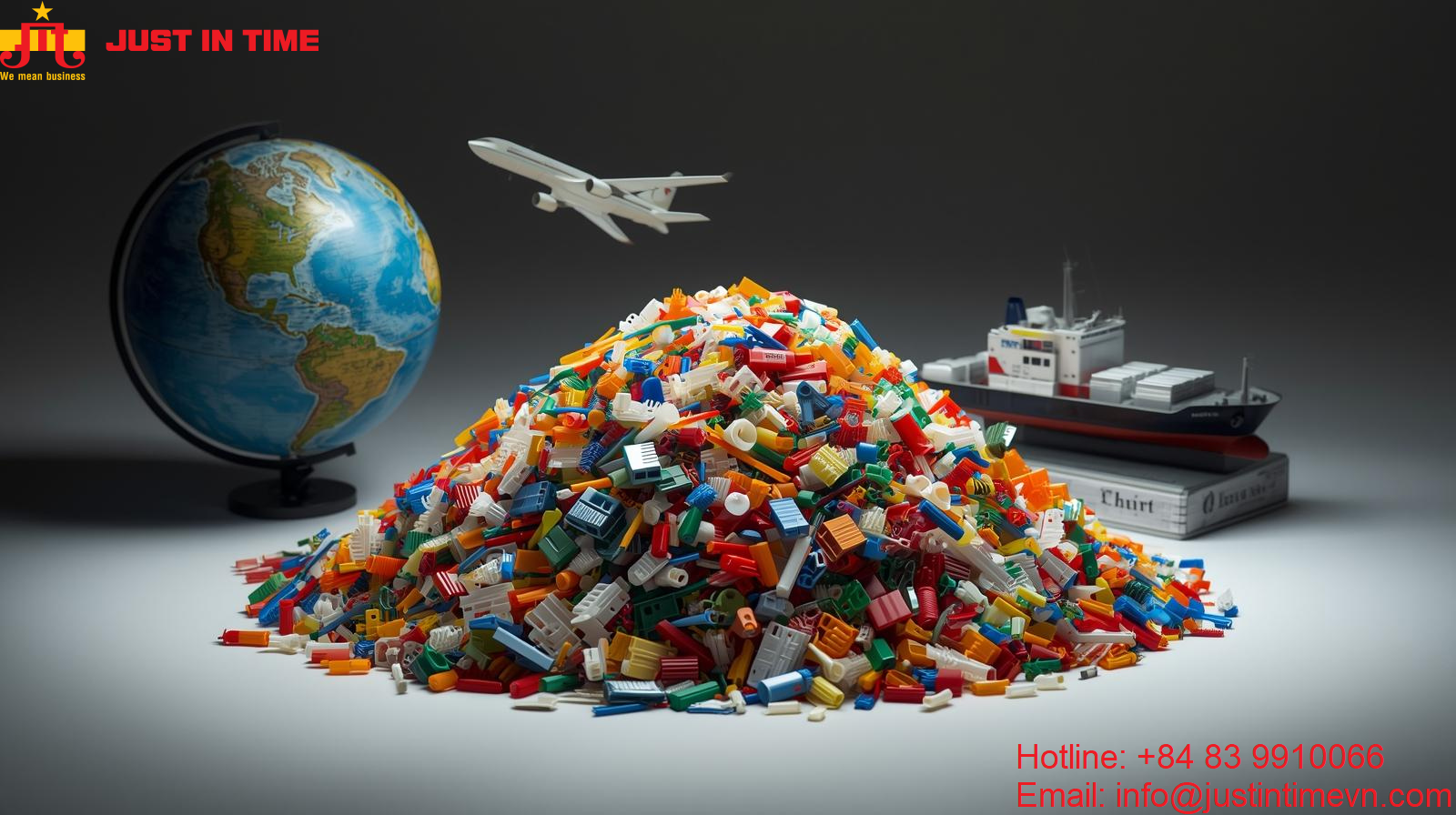Procedures for Importing Plastic Scrap – Dossier, Process, HS Codes & Costs
Posted on: 17/11/2025

1. Legal Overview of Plastic Scrap Importation
Imported plastic scrap must comply with environmental technical regulations, permitted categories, and impurity limits under current regulations. Importing enterprises must make an environmental protection deposit, carry out quality inspection, and comply with pre‑clearance requirements. These conditions ensure the imported scrap does not negatively impact the environment and can be legally imported.
2. Types of Plastic Scrap Permitted for Import
Commonly imported plastic scrap types include:
-
PET plastic
-
HDPE plastic
-
LDPE plastic
-
PP plastic
Depending on the regulatory period, some types may be prohibited or restricted if they fail to meet technical standards. Importers must check updated regulations before signing contracts.
3. Required Documents for Plastic Scrap Import (Complete Checklist)
Documents to prepare before cargo arrival:
-
Commercial Contract
-
Commercial Invoice
-
Packing List
-
Bill of Lading
-
Certificate of Origin (if applicable)
-
Documentation describing the type and source of plastic scrap
-
Environmental protection deposit receipt
Documents required for customs clearance:
-
Electronic customs declaration
-
Certificate of quality inspection for the scrap
-
Environmental protection deposit receipt
-
Commercial documents (Invoice, Packing List, Bill of Lading)
-
Additional documents required by authorities depending on each case
** See more Import Procedures for Bath Soap in Vietnam
4. HS Codes for Plastic Scrap
Importers must determine the correct HS code based on the type and form of the plastic scrap. Reference HS codes:
-
3915.xxxx – Waste, parings, and scrap of plastics
-
3915.10 – Waste of primary plastic in granular form
-
3915.90 – Other plastic waste and scrap
HS codes may vary depending on the actual form of the scrap; consult customs or a classification specialist.
5. Plastic Scrap Import Procedure (Step‑by‑Step)
Step 1: Identify the type of plastic scrap and HS code
Check technical regulations, impurity limits, permitted scrap types, and determine the appropriate HS code.
Step 2: Make the environmental protection deposit
Enterprises must deposit the required amount before importing. The deposit value depends on shipment weight and value. Proof of deposit is mandatory during customs procedures.
Step 3: Prepare documents and sign the import contract
Ensure all documents clearly detail the scrap type, quantity, and quality standards.
Step 4: Inspection when cargo arrives at the port
An authorized inspection body will take samples, analyze them, and issue a quality inspection certificate. This certificate is mandatory for customs clearance.
Step 5: File the customs declaration
Submit the customs declaration, inspection certificates, deposit receipts, and commercial documents. Customs may inspect the goods if needed.
Step 6: Clearance and cargo release
Once all requirements are met, customs will approve clearance.
Step 7: Reporting and deposit refund
The importer must demonstrate proper use of the scrap. After verification, the deposit may be refunded.
6. Timeline for Plastic Scrap Import Processing
-
Document preparation: 3–7 days
-
International shipping: varies by route (7–45 days)
-
Quality inspection: 2–7 days
-
Customs clearance: 1–5 days
Total estimated time from purchase to cargo receipt: 2–8 weeks.
7. Plastic Scrap Import Costs (Reference)
-
Quality inspection fee
-
Environmental protection deposit
-
Import duty and VAT (if applicable)
-
THC, storage, demurrage
-
Customs brokerage and logistics service fees
Costs vary depending on scrap type, container quantity, and inspection time.
** See more Procedures for importing MDF boards
8. Common Risks in Plastic Scrap Importation
-
Incorrect HS code classification leading to fines or cargo hold
-
Inspection samples failing to meet standards
-
Failure to make the required environmental deposit
-
Cargo belonging to prohibited categories or unclear sourcing
-
Delays due to missing or inconsistent documentation
Enterprises should carefully verify suppliers and work with experienced logistics or customs agencies.
9. Frequently Asked Questions (FAQ)
Which plastic scrap types are allowed for import?
Only plastic scrap that meets technical regulations and impurity limits applicable during each regulatory period.
Can foreign inspection certificates be used?
They usually must be re‑inspected in Vietnam by an authorized inspection body.
Can the environmental deposit be refunded?
Yes. After proving that the scrap has been used properly according to regulations.
What happens if the shipment fails quality standards?
Customs may require re‑export, destruction, or other handling measures as prescribed by authorities.
10. Conclusion
Plastic scrap importation involves multiple steps and stringent requirements relating to documents, environmental deposits, quality inspection, and customs clearance. Importers should thoroughly prepare and coordinate with experienced logistics and customs service providers to ensure smooth and compliant importation.
If you have difficulties when clearing customs, you can choose Just In Time as a companion.
Just In Time's staff is always enthusiastic to support you to handle your work quickly and professionally.
JUST IN TIME JOINT STOCK COMPANY
Address: No. 5, Dong Da, Tan Son Hoa Ward, Ho Chi Minh City
Hotline: +84 83 9910066
Email: info@justintimevn.com
Facebook: https://www.facebook.com/justintimevn
** See more Procedures for importing cartons